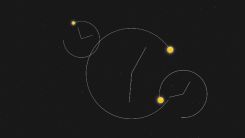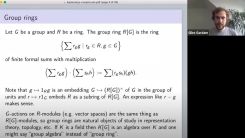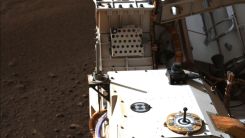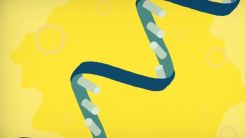Mark Bustos

Tesla Crash in Texas Highlights Risks of Driverless Cars
Will New Spintronics Device Produce More Powerful Computer Processors?

Technology, Gadgets Use May Change Human Body Clock; Here's What to Do
Legionnaire’s Disease Detected in Macon Hotel Hot Tub: Where Is Its Origin? What Are the Symptoms, Treatment?

AI Tool Uses Satellite Imagery to Find Pollution Hotspots

Earth Day 2021: Rainforest Trust Releases "Seven Ways to Help the Environment"
Phytoplankton Genes Used by Researchers to Monitor Ocean Conditions
New Graphene 3D Printing Technique Makes Feasible Water Filters
Ultrasound Waves Create Never-Repeating Pattern in Carbon
Bronze Mirrors From Ancient China Still Reflect After 2,000 Years
New Nanothin Coating Kills Superbugs, Fungi, Bacteria: Here's How It Works

Effect of Noise Pollution on Plants Persist Even After Source is Removed

Three-Body Problem: Centuries-Old Physics Puzzle Addressed With New Theory

80-Year-Old Kaplansky Unit Conjecture Disproved in a Research
Meet the Monkeydactyl: Oldest Flying Reptile With Opposed Thumbs
Nuclear Detonations to Deflect Asteroids: Is It Possible?

Tech Leader Salesforce Steps Up Vaccine Cloud for Faster Vaccine Scheduling
‘Spot' the Robot Dog Tested in Combat Scenarios to Prepare for Military Applications, Battlefield Robotization

‘Godzilla’ 6-Foot Monitor Lizard Invades 7/11 Convenience Store in Thailand
Dead Whales Washed Up in Sea: Four in San Francisco Bay, Two More in Bangladesh

Understanding Turbulence: Vortices in Quantum Fluid Visualized
Neural Network From Brain to Eyes Evolves Much Earlier, Fish Genetics Study Shows
Spacing in Text Logos Affect Customer Opinion, Here's What Designers Should Do

NASA Perseverance Sends First Weather Report from Jezero Crater, Sleeps After Recording Data

Origin of Life Possibly Begins With XNA Before RNA, DNA

Wearable Devices Without Charging Possible? New Technology May Use Body Heat for Power

Not Always the Alphas: Female Sheep Prefer Less Dominant Males as Mates
Beyond Artistic Bias: Scientists Release "More Accurate" Representations of Ancient Hominids
New Mechanism Allows Electrical Control of the Magnetism in Nanodevices
Most Popular

Will Earth's Magnetic Poles Flip Next? Magnetic Pole Reversal Explained Through Cutting‑Edge Magnetosphere Science

Relativity Time Dilation Explained: The Physics of Time and Why It Moves Differently in Space

How Lightning Science Reveals Why Charged Storms Are Rising with Global Warming Effects

How AI Is Used in Weather Prediction: Smarter Forecasting Through Machine Learning




